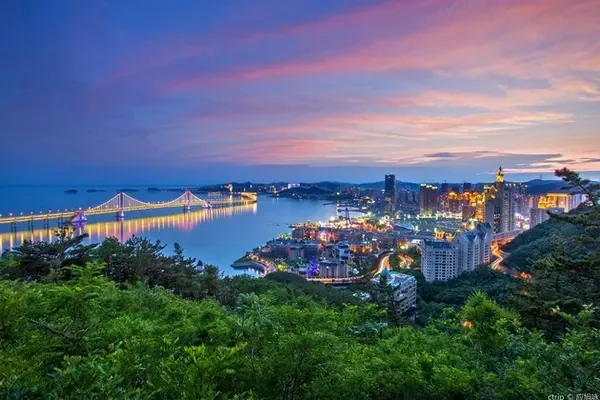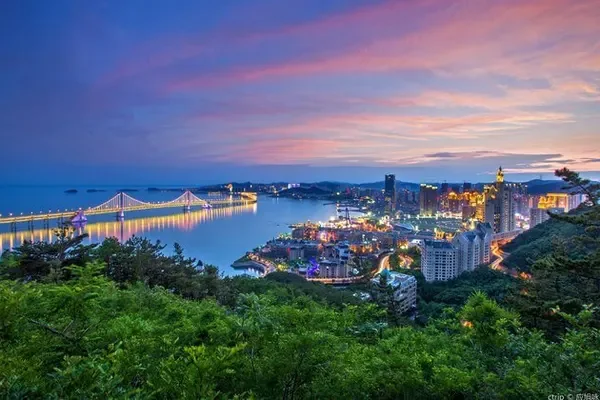Brief Notes on Baihaba Village and Hemu Village Border Villages Xinjiang Journey No. 5
The requirements for going to Baihaba Village are the most. You cannot bring a suitcase with you, only a small carry-on bag. As for the suitcase, it has to be placed on the group bus waiting in Jiadengyu. This bus cannot enter the scenic spot. Then, go to the distribution center of Karas Scenic Area and apply for a border pass per head. After obtaining the border defense certificate, take the small bag and transfer to the one-hour shuttle bus at the distribution center of the scenic spot. Such troublesome procedures still cannot stop the mighty flow of tourists. The public security agency that handles border defense permits is crowded with people inside and outside the house, creating chaos.
What exactly is this for? Travelers, if they ask themselves: Why do they go to those troublesome and unfamiliar places, probably one of the reasons they often use is yearning for novelty. There is a copy of "Map Control" in front of the desk. Under the map on the colorful cover, two lines of bold characters tell people why we would rather suffer than travel?
"I don't have any reason to escape from the real world, but I am full of longing for novel places." ("Map Control" cover, photo 1)
A map is a reading material that can make people feel novelty. Today's electronic map makes it easier for travel friends to find novelties in places where there are almost no novelties but only twists and turns when looking back on his itinerary.
In order to write this short note on two villages, I keep trying to use maps, either paper or electronic, to activate the idea of splicing text and pictures. Google's map doesn't work, and Microsoft's map doesn't work either. Try using Baidu on a desktop computer. However, I accidentally discovered on the Baidu map that these two small border villages in Burqin County, Altay Prefecture, Xinjiang, are the places farthest from Guangzhou in China. Guangzhou is 5056 kilometers away from Hemu Village and 5050 kilometers away from Baihaba Village (photo 2 distance map). The imaginary Mohe in Heilongjiang should be farther away, but it is only 4362 kilometers away from Guangzhou. There is always novelty in travel, and this is clearly a living example.
In the map, it is probably impossible to find a place farther away than these two border villages for Guangzhou in China. Because the Baihaba village we arrived at is already on the border line between Kazakhstan and the most northwestern tip of China. The Hualin Tribe Inn we stayed at was less than 300 meters away from the border (Photo 3 Hualin Tribe). Walk out of the inn, and the border sign made of iron nets and iron net cylinders is right beside you. The cattle, sheep and trees on both sides of the iron fence are vivid (photos 4 and 5, border scenery). The Baihaba village is close to the parking lot of the first outpost in the northwest, right behind the yellow bathroom, a Sino-Kazakh road crosses the border, the white iceberg, the golden birch forest under the iceberg, and the wire border line all the way down The lines, shining in the afterglow of the setting sun, are not just showing some kind of novelty? (Photo 6 Baihaba parking lot).
On the edge of the parking lot, there are two small white cars. I approached the owners and chatted lightly. I knew that they were all looking at the novelty of the Chinese border and traveling along the border. The ambition is also novel. A middle-aged Mongolian man from Shenzhen plans to walk the entire border of China alone. The other two middle-aged couples are planning to travel around Xinjiang, Tibet and Gansu for two months (Photo 7: two small cars). Tourism has become a life pursuit for these people, a pursuit with expectations and dreams. You seem to see some novelty among these obsessed tourists.
The topic is off, but it should not be too long. Let’s leave the other feelings of Baihaba Village to the pictures (Photos 8-9), and remember Hemu Village in the rest of the space.
After swimming in the three bays of the Karas River, the accompanying bus took us from Jiadengyu North to Hemu Village, with only the accompanying small bag and no suitcase. Hemu has a magnificent scenic gate (Photo 10 Hemu Gate), to enter the gate, first take the scenic bus for an hour, and then take the scenic bus (Photo 11 Scenic Bus Hongbas Station). Fortunately, it is only one stop away, and we will stay at the Mangrove Inn in Hemu Village (photo 12 at the entrance of the inn).
The reproduction of human beings always lives by water. There is Haba River next to Baihaba Village, which is divided into old village and new village. The old village is at the bottom of the valley, but our time in Baihaba Village is really limited. If we stay for one night, we have to return in the morning, so we have no time to go to the old village. We can only experience the dusk, night and morning of Baihaba New Village. Next to Hemu Village is the Hemu River (photo 13 Hemu River), which is also divided into old villages and new villages, but the old and new are connected together, and the scale is much larger than that of Baihaba Village. The never-before-visited Karas Village is in the central scenic area, naturally accompanied by the scenic Karas River in Sanwan.
In Burqin County, Xinjiang, Baihaba, Hemu and Karas villages are collectively known as the hometown of Mongolian Tuva people. The Tuva people in these three villages have almost the same geography, the same houses, and the same customs. Just as we only have the opportunity to taste two of the three bays in Karas when we travel to the three bays of Karas, we also only have the opportunity to experience two of the three villages in the three Tuwa villages of the Burqin Mongolian nationality. There are always shortcomings in life, and the shortcomings in life just make you cherish life and make up for those shortcomings with non-stop thinking and reading. These two types of landscapes are completely different, but analogies can be found in numbers. Isn't it also a novelty in the journey?
Because there is a whole day, the dusk and morning glow of Hemu, the small bridge and flowing water of Hemu River, the golden birch forest all over the hillside of Hemu, and the wooden house cattle and sheep in the new village of Hemu Old Village, all left some photos captured by the camera. Photos (Photos 14-20). Needless to say, these photos show Hemu's demeanor, and also reveal our emotions for Hemu. 2019/10/09
1 map control
2 The village farthest from Guangzhou
3 birch tribe
4 cobblestone map
5 Border Iron Net
6 car parks
7 two cars
8 A corner of the birch forest tribe, one of the scenery of Baihaba
9 The little goat in the inn of Baihaba Scenery No. 2
10 Gate of Hemu Scenic Area
11 Hemu Bus Station Humbas
12Hemu Mangrove Inn
13 Hemu River sign
14 Hemu Dusk
15 Hemu River Sign Stone
16 hanging lamb
17 Hemu Village in the Sun
18 The morning light shines on the hillside
19 The morning light shines on the hillside
20 Hemu Sunrise


